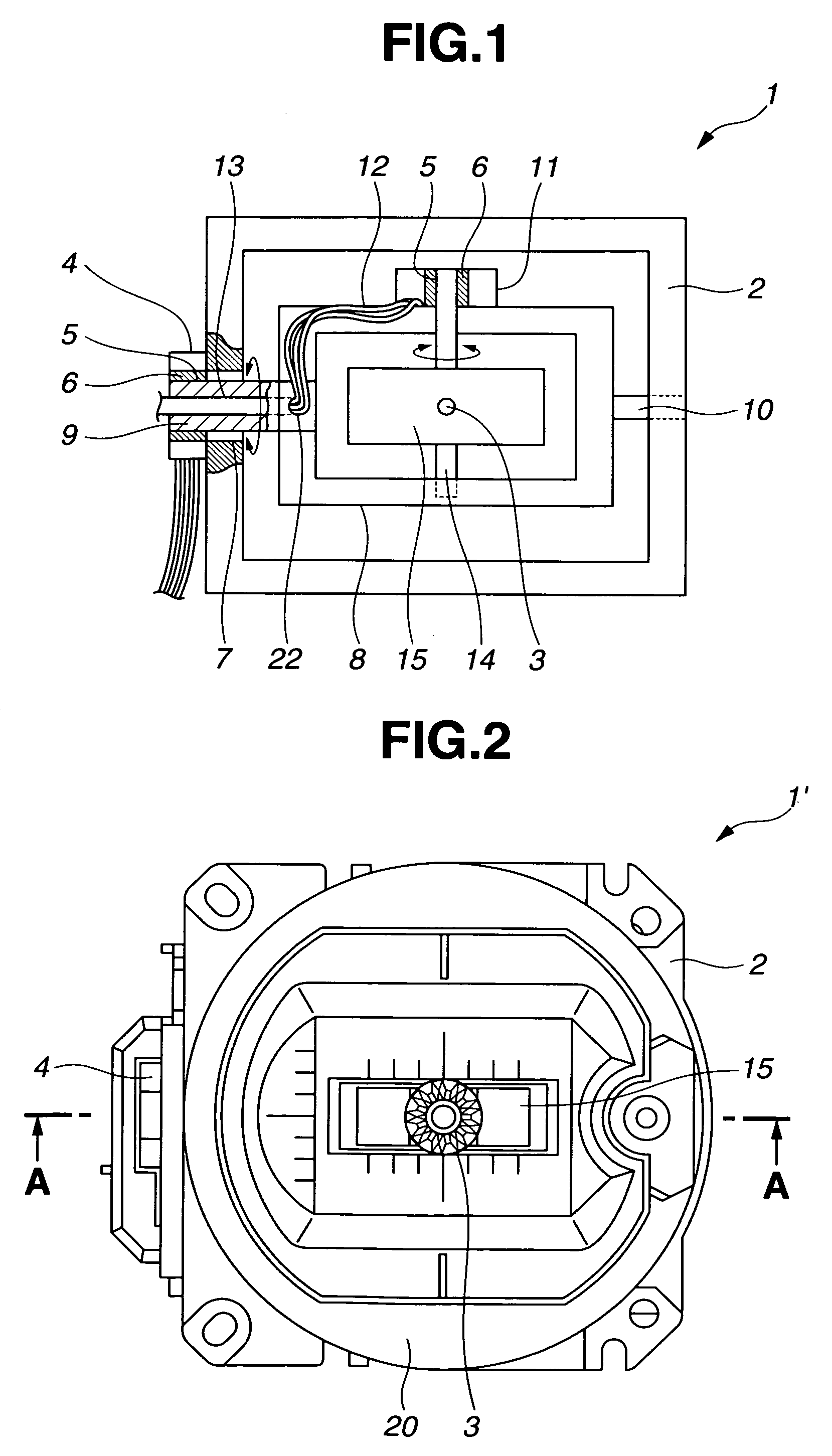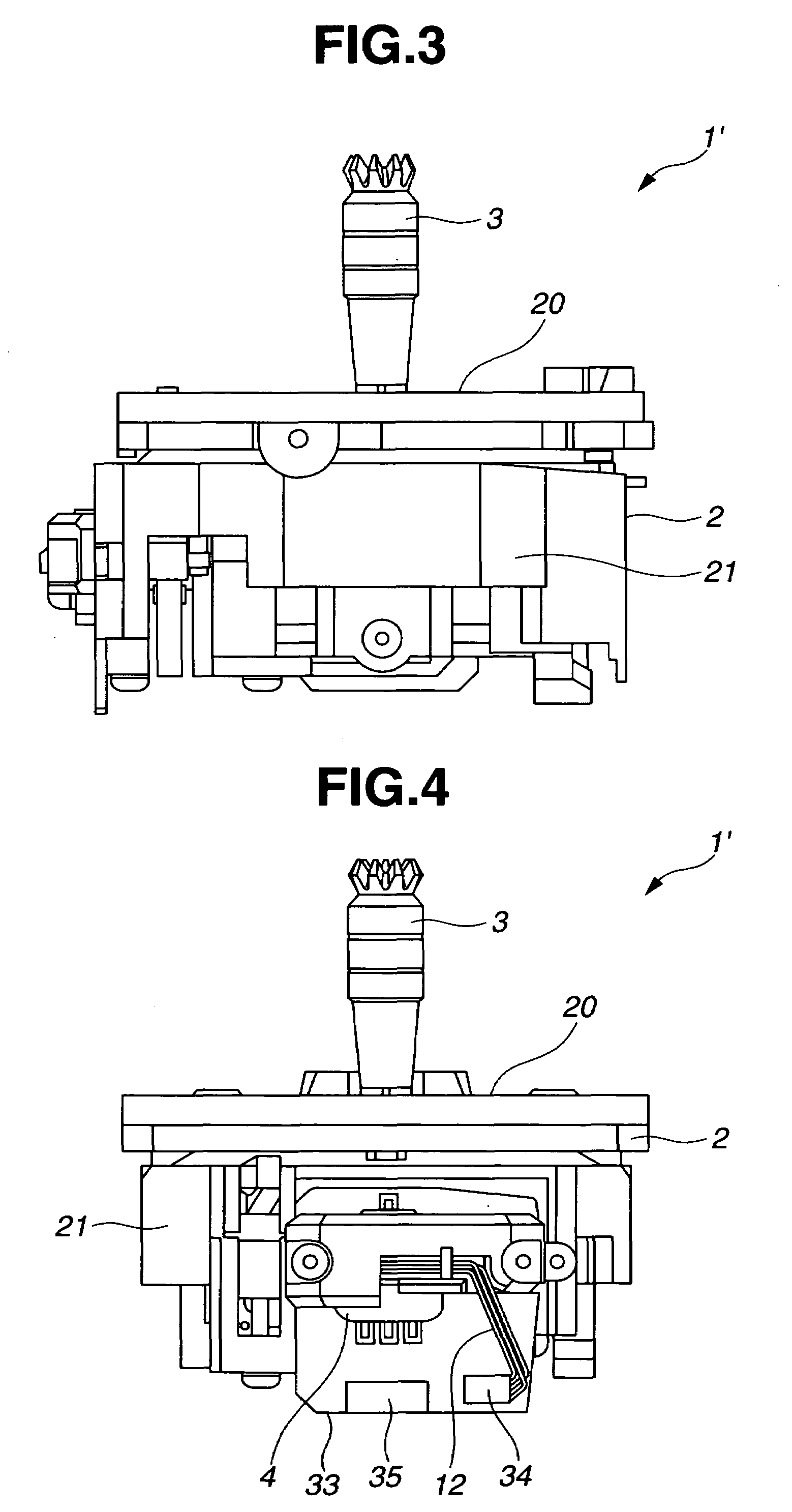Stick lever units
a technology of levers and levers, applied in the direction of mechanical control devices, pulse techniques, coding, etc., can solve the problems of wiring conductors b>110/b> to break, unfavorable operator feeling, etc., and achieve the effect of convenient insertion work
- Summary
- Abstract
- Description
- Claims
- Application Information
AI Technical Summary
Benefits of technology
Problems solved by technology
Method used
Image
Examples
Embodiment Construction
[0035]The best mode for embodying the present invention will be described below by referring to FIGS. 1 to 12. The basic structure of a stick lever unit according to the present invention will be explained below by referring to FIG. 1.
[0036]The stick lever unit 1 of the present embodiment includes as a main body a fixing member 2 fixed to the housing of a radio-controlled transmitter. The fixing member 2 is a frame member, in a nearly rectangular shape, having a space in which the rotational mechanism of the stick 3 is assembled. A first variable resistor 4 is mounted on the outer side of the side wall of the fixing member 2. The first variable resistor 4 is a rotational-type variable resistor that includes a rotational body 6 with a through hole 5, as a rotational operation section varying the resistance value. When the shaft, which is connected to the rotational body 6 through the through hole 5, is rotated, the resistance value changes. The opening 7 is formed in one side wall of...
PUM
 Login to View More
Login to View More Abstract
Description
Claims
Application Information
 Login to View More
Login to View More - R&D
- Intellectual Property
- Life Sciences
- Materials
- Tech Scout
- Unparalleled Data Quality
- Higher Quality Content
- 60% Fewer Hallucinations
Browse by: Latest US Patents, China's latest patents, Technical Efficacy Thesaurus, Application Domain, Technology Topic, Popular Technical Reports.
© 2025 PatSnap. All rights reserved.Legal|Privacy policy|Modern Slavery Act Transparency Statement|Sitemap|About US| Contact US: help@patsnap.com



